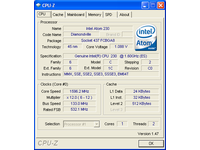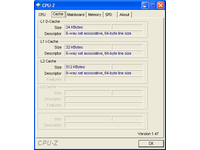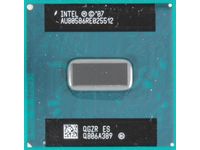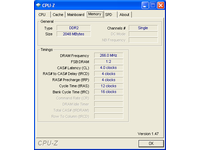Atom, Athlon, or Nano? Energy-Savers Compared
Intel Atom 230 (1.6 GHz)
Intel’s Atom processor is the latest addition to the product portfolio, and it targets the low-power, low-budget market. It doesn’t come as a surprise to see Atom processors in ultra-mobile PC devices as well as in nettops and low-cost PCs. Atom seems to be a product that can go anywhere where budgets or power is an issue, especially in developing countries.
Technical Details
Intel created a new package based on a 441-ball Micro-FCBGA (Flip-Chip Ball Grid Array) layout. Hence, all Atom processors are always soldered onto their motherboards-–it will be impossible to upgrade Atoms should you require more performance. Available clock speeds range from 800 MHz to 1.8 GHz. We looked at a motherboard that uses the 1.6 GHz Atom 230 processor. It is rated at a thermal design power of only 4 W, which makes it the lowest-power x86 processor for desktop-like applications. There are other Intel devices that are geared for low power consumption applications, but they don’t provide performance that would be close to that of the Atom.
Atom Holds Records
Thanks to Intel’s 45 nm manufacturing process, the Atom processors are technologically impressive, whether you personally like them or not. A 26 mm² die size is very tiny, as you will also see in our photos. AMD’s Athlon 64 is three times larger at 77.2 mm² and the VIA Nano still requires more than twice the footprint at 63 mm². Looking at our Atom test sample’s clock speed of 1.6 GHz and considering that the TDP is only 4 W while the VIA 1.8 GHz device has a 25 W TDP, the Intel device requires less power per clock cycle. However, VIA does better in terms of performance.
Average Performance, Good Performance Per Watt
Atom is a low-power product, but it is not really fast. It dominates the synthetic benchmark suite PCMark05, but it loses in most of the real world benchmarks we used. However, it does well in benchmarks where the Hyper-Threading technology kicks in. Intel’s feature provides two virtual processing cores for the operating system. And it does have its positive effect in SYSmark 2004, as well as in WinRAR, which is thread-optimized. The Atom 230 reached the best performance-per-watt ratio in our SYSmark 2004 test, as it requires the least system power while providing average performance.
Get Tom's Hardware's best news and in-depth reviews, straight to your inbox.
These results would be even more favorable for Intel if the platform were more efficient. We’re looking forward to the Atom dual-core processors, as these devices might change the balance of power in the low-power segment in favor of Intel. Next year, Intel will launch its Moorestown CPUs, which are supposed to include a memory controller as well as a graphics unit right on the CPU die.


Current page: Intel Atom 230 (1.6 GHz)
Prev Page AMD Platform: Gigabyte MA78GM w/ AMD 780G Chipset Next Page Atom Platform: ECS 945GCT-D
